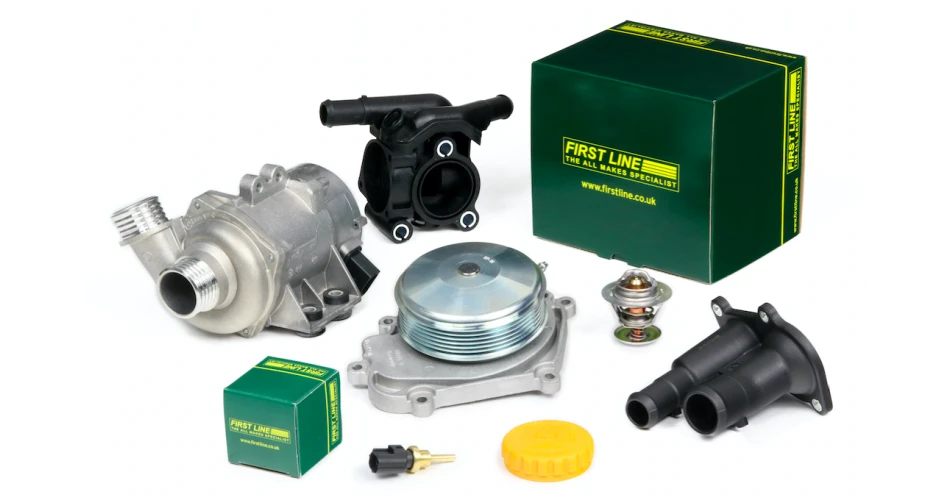First Line is highlighting the importance of checking a vehicle’s cooling system both to maintain the performance of the vehicle and as a revenue opportunity for garages.
The company says, cooling systems are vital, not only on the hottest days of summer, but also when temperatures dip below freezing, as they have to be in first-class condition to ensure the health of the engine and maintain its optimum efficiency when it comes to fuel consumption and emissions.
As vehicle manufacturers seek to meet the emission and fuel consumption targets demanded by the European Union, many of the components they use are designed to help reduce the overall weight of the vehicle. As a result many thermostat housings are now made of plastic, which while effective in reducing kerb weight can be prone to fracture as they age, particularly as they are subject to enormous heat variation and vibration due to the fact that they are often mounted on the engine.
First Lime points out that technicians need to check for the tell-tale signs of a fracture, which will not necessarily reveal itself as a pool of coolant on the workshop floor, but more likely as a shiny residue left on the engine surface where the coolant has run and has been evaporated by the heat from the engine. Sometimes it can run into the engine under tray, which means that the first the driver will know about the problem is when the temperature gauge on the dash rises sharply toward the red zone.
Coolant flanges should always be on the list of pre-winter service checks, as these are a key component of any cooling system, being the dividing point at which the coolant is routed according to directions from the thermostat. The condition of the flange is of paramount importance, as sub-zero temperatures can lead to cracking. They can also be vulnerable when technicians are removing hoses during maintenance work and a damaged flange can lead to reduced efficiency of the coolant system, through overheating, with the resultant risk of engine damage.
First Line also stresses that the day of a one type fits all coolant are now gone, with different types of coolant required according to the vehicle manufacturer’s specification.
